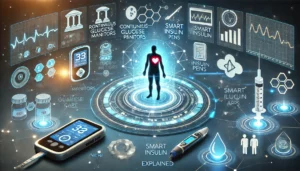alt=”Description of image content” style=”width:650px; height:auto;”/>
“`html
Bridging Healthcare Gaps with Community Health Workers in Hypertension Management
The healthcare landscape is constantly evolving, with a growing emphasis on patient-centric approaches. One of the key focus areas is hypertension management, a prevalent condition affecting millions across the globe. Despite advancements in medical science, numerous individuals still face barriers in accessing effective hypertension care. A promising solution lies in empowering Community Health Workers (CHWs) to fill critical gaps, providing personalized support and ensuring better outcomes.
Understanding the Role of Community Health Workers
Community Health Workers are frontline public health professionals who have a deep understanding of their community’s unique needs. They act as a bridge between healthcare systems and the people they serve, providing educational resources, guidance, and practical support. Their role becomes particularly crucial in hypertension management, where lifestyle modifications, education, and adherence to treatment plans are vital.
Key Functions of CHWs in Hypertension Management
- Education and Awareness: CHWs educate individuals about hypertension, its risk factors, and the importance of lifestyle changes such as diet and exercise.
- Monitoring and Follow-up: Regular check-ins by CHWs help monitor blood pressure levels, ensuring early detection and timely intervention.
- Community Engagement: CHWs organize workshops and community events, creating platforms for open discussions about hypertension and health management strategies.
- Support and Motivation: CHWs provide emotional support, encouraging individuals to adhere to prescribed medications and treatment plans.
Challenges in Hypertension Management
Despite available treatments, effective management of hypertension remains a challenge for many due to various barriers:
- Limited Access to Healthcare: Socioeconomic disparities and geographical barriers often result in inadequate access to healthcare services.
- Lack of Awareness: Many individuals are unaware of hypertension’s risks or the importance of regular monitoring and control.
- Medication Non-Adherence: Various factors, including forgetfulness or side effect fears, contribute to poor medication adherence.
- Sociocultural Barriers: Language, cultural beliefs, and social stigma can hinder effective communication and treatment adherence.
How CHWs Overcome These Challenges
Community Health Workers play a pivotal role in addressing these challenges by offering tailored solutions:
Improving Access to Healthcare
CHWs leverage their understanding of local communities to connect individuals to healthcare services. By conducting home visits and organizing health camps, they bring healthcare to the doorstep, making it accessible even for underserved populations.
Raising Awareness and Education
Through engaging educational sessions, CHWs enhance community awareness regarding hypertension and prevention strategies. By demystifying medical jargon, they empower individuals to understand their health conditions better.
Encouraging Medication Adherence
CHWs actively work with individuals to address concerns about medication, alleviating fears and clarifying misconceptions. Regular follow-ups and reminders help ensure medication schedules are maintained.
Bridging Sociocultural Gaps
With cultural competence, CHWs break down the barriers of language and tradition, imparting health messages sensitively and meaningfully. This fosters trust and improves communication between healthcare providers and patients.
The Future of Hypertension Management with CHWs
The integration of CHWs into hypertension management plans holds immense potential for the future. With their grassroots approach, they provide solutions that are not only effective but also sustainable over time. As healthcare systems increasingly recognize the value of CHWs, steps can be taken to expand their roles, offering them more comprehensive training and resources.
Potential Innovations and Growth Areas
- Technological Enhancements: CHWs can leverage mobile health applications for real-time data collection, telehealth consultations, and digital health education.
- Collaborative Models: Integration into interdisciplinary healthcare teams ensures comprehensive and holistic care delivery.
- Policy Support: Government and organizational policies can provide more formal recognition, support, and funding for CHWs.
Conclusion
Community Health Workers are indispensable assets in the battle against hypertension. By bridging the gap between healthcare systems and communities, they enhance the reach and impact of health interventions. Embracing and empowering CHWs is not just a step towards improved hypertension management; it is a commitment to equitable and accessible healthcare for all.
“`



